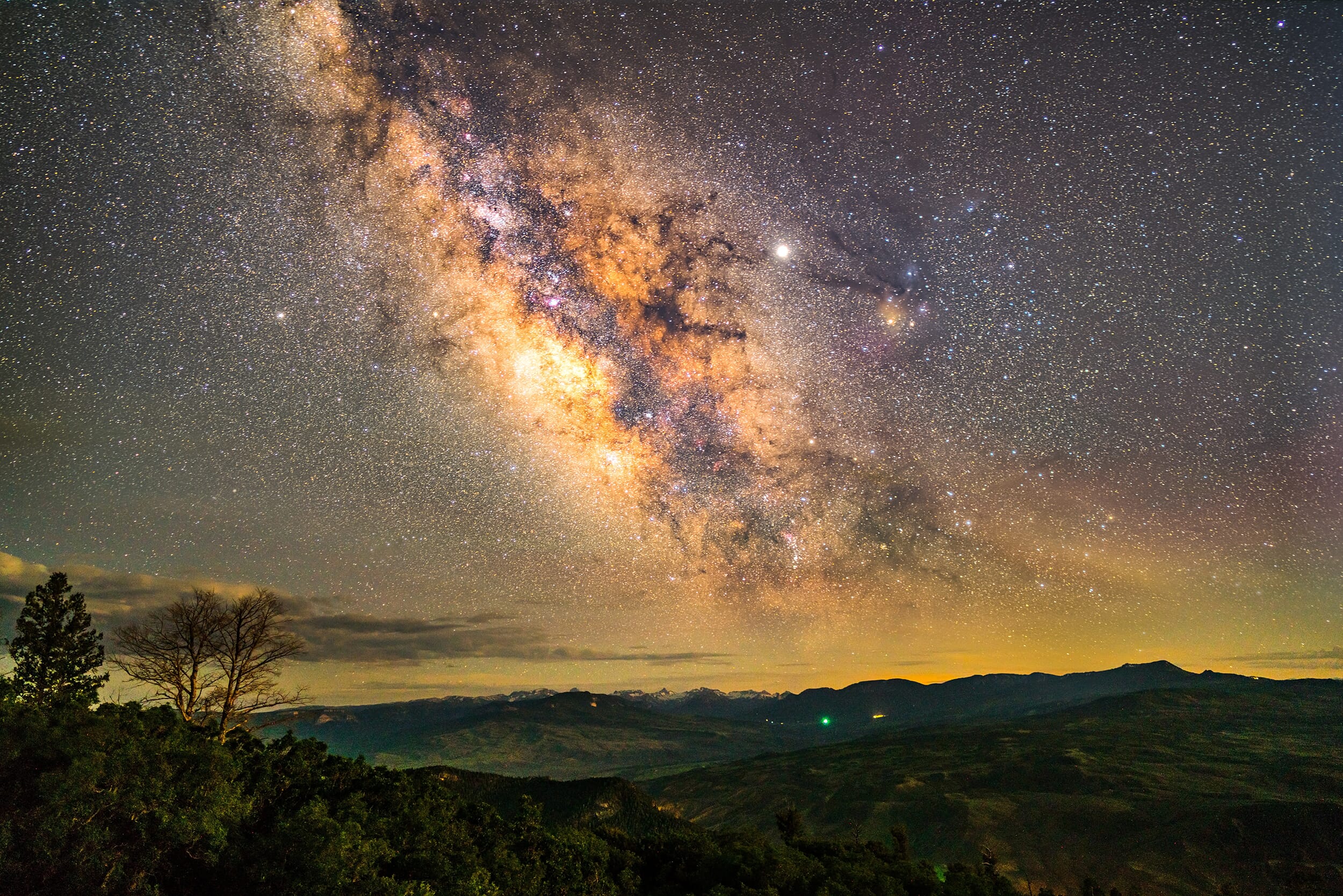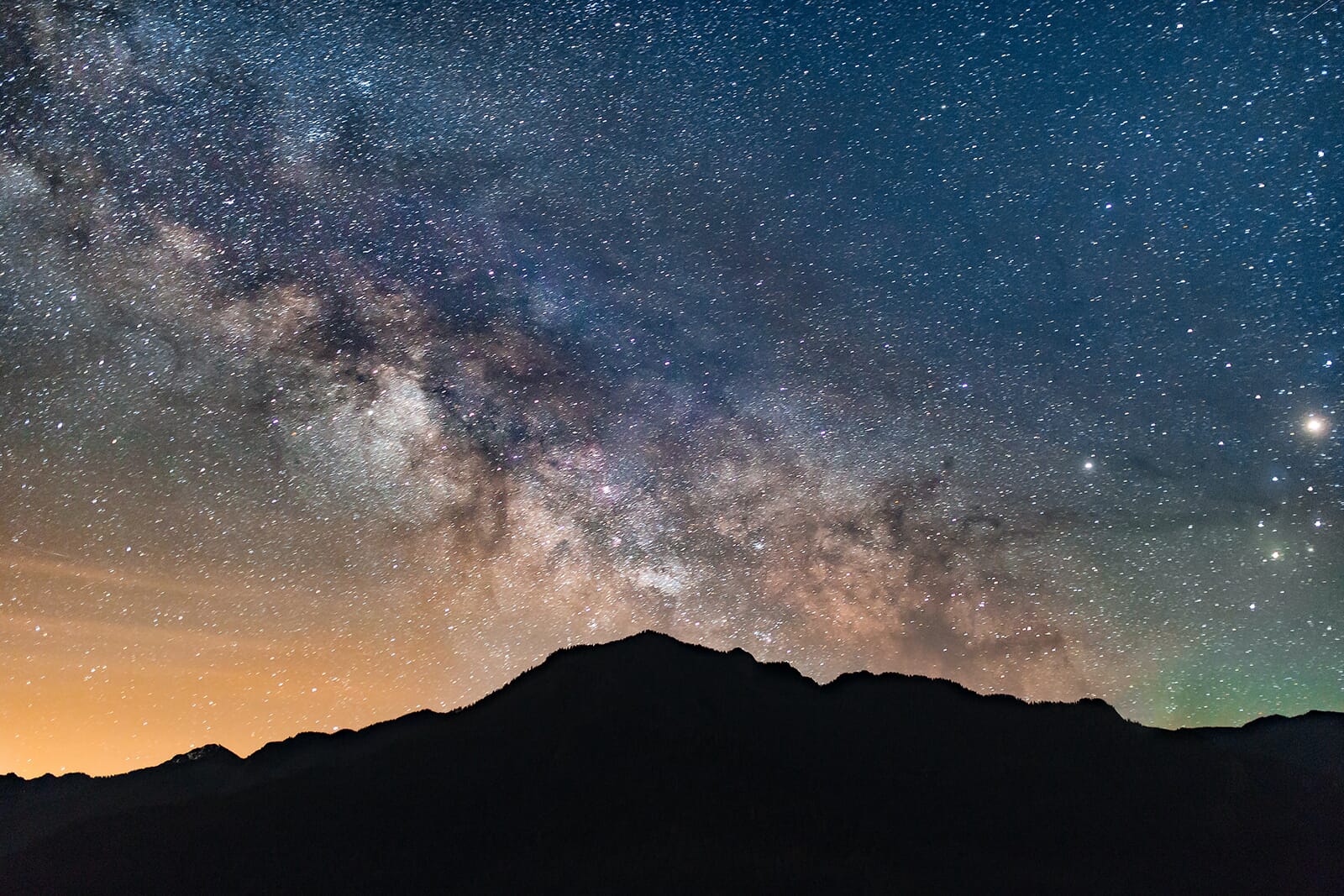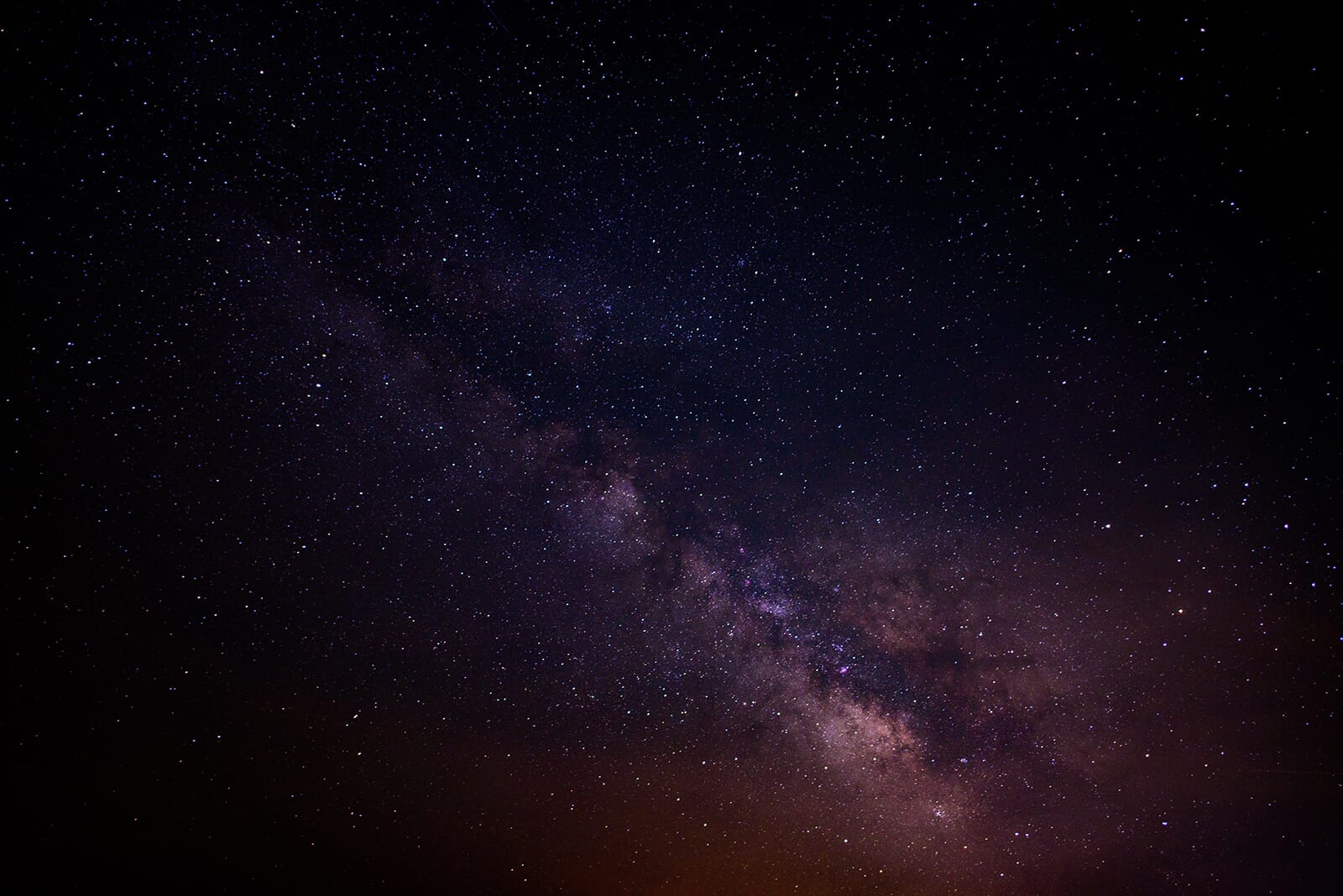Editor’s Key Takeaways: Top 10 Cameras for Stunning Astrophotography

This guide presents ten of the best cameras for astrophotography, comprising of both high-end and budget options. They offer superior quality low-light capabilities and a range of impressive lenses.
- Nikon Z7 II: A professional-grade camera with a 45.7 MP sensor promising high-resolution night sky images. It can shoot at exposures of up to 900 seconds, providing excellent flexibility for night sky photos. It supports a wide range of high-quality Nikon lenses for astrophotography.
- Canon EOS R5: This full-frame mirrorless camera is suitable for almost all photography types, including astrophotography. It has an expandable ISO range of 100-102,400 for superior night shooting versatility, and a maximum shutter time of 30 seconds. The model is compact and robust for a full-frame camera.
Other recommended cameras include Sony a7R IV, Fujifilm X-T4, Nikon Z6 II, Canon EOS R6, Nikon D850, Nikon D810A, Sony a7 III, and Canon EOS M50 Mark II.
When you buy through links on our site, we may earn a commission at no cost to you. We evaluate products independently. Commissions do not affect our evaluations. As an Amazon Associate, we earn from qualifying purchases.
Introduction
To take beautiful photos of the night sky, you need a high-quality camera, one that offers impressive low-light capabilities and access to a wide range of excellent lenses.
In this guide, we have selected the 10 best cameras for astrophotography, including a mix of high-end and budget options.

Best Cameras for Astrophotography:
1. Nikon Z7 II
The Nikon Z7 II can take long-exposure shots up to 900 seconds, plus it offers excellent low-light capabilities.
Our first pick is the Nikon Z7 II. It is a professional-grade camera and has some excellent features that make it perfect for astrophotography.
At its core, the Nikon Z7 II packs an amazing 45.7 MP sensor. Therefore, you can expect high-resolution and beautiful-quality night sky images.

One of the Z7 II’s best astrophotography features is its ability to shoot at exposures of up to 900 seconds (15 minutes). This provides excellent flexibility for your night sky photos (and is complemented by the camera’s great low-light capabilities).
There is also a superb range of Nikon lenses for astrophotography that are compatible with this camera. The native Nikon Z lenses are all of great quality, especially the S-series lenses. These lenses typically have a maximum aperture of f/1.8 or larger and amazing optics.
2. Canon EOS R5
The Canon EOS R5 excels at producing night sky photos with low noise and plenty of detail.
One of Canon’s most powerful full-frame mirrorless cameras is the Canon EOS R5. This is a professional mirrorless camera that excels at pretty much every type of photography, including astrophotography. It has a hefty price tag, but if you like Canon and want top-quality images, the EOS R5 is a great choice.

The R5 has some of the best low-light capabilities available. It has an expandable ISO range of 100-102,400, which offers incredible versatility for shooting at night. The shutter has a maximum time of 30 seconds.
The Canon EOS R5 also features a relatively compact design (for a full-frame camera). The body is robust and weather sealed, and you can confidently take it on outdoor adventures.
In terms of lens compatibility, you can use the EOS R5 with high-quality native RF lenses. Alternatively, you can use an adapter and work with the entire range of top-quality EF lenses.
3. Sony a7R IV
The Sony a7R IV is a superior full-frame mirrorless camera that has a staggering 61 MP sensor for ultimate detail.
Sony’s highest-resolution camera is the Sony a7R IV, and in many ways, this full-frame mirrorless camera actually outperforms the two models featured above.

For example, it has one of the best high-resolution sensors currently available, a 61 MP full-frame option that has a 15-stop dynamic range for amazing low-light performance and color reproduction. Expect your night sky and galaxy photos to contain minimum noise and feature superb detail.
This camera also has a premium look and feel. It has a durable, magnesium-alloy covering for the lens mount. The button and dial layouts are also intuitive and allow you to easily change settings while shooting at night.
Sony a7R IV owners also gain access to some incredible lenses. This includes the best Sony lenses for astrophotography, such as the Sony FE 24mm f/1.4 GM and the Sony FE 30mm f/1.8 G. If you’re looking for pure image quality and detail, the Sony a7R IV is one of the best cameras for astrophotography you can buy.
4. Fujifilm X-T4
The Fujifilm X-T4 is perfect for shots where you want to bring out the beautiful colors of space.
Fujifilm also has a decent selection of cameras for astrophotography, and one of their top options is the Fujifilm X-T4. This full-frame mirrorless camera performs great in low light and also offers some excellent features.

It has a 26.1 MP sensor that produces high-quality images, and the expandable ISO range of 80-51,200 is great for nighttime shooting. We also like that the X-T4 has an advanced AF mode that can focus easily in low-contrast situations.
The Fujifilm X-T4 is easy to use and features an ergonomic design. The LCD touchscreen can be fully rotated and tilted so that you can comfortably view image previews of your astrophotography. It also has an exposure compensation range of -5.0 EV to 5.0 EV in 1/3-stop increments.
And the Fujifilm X-T4 has access to a great range of lenses that excel at color reproduction and low-light performance. If you’re interested in beautiful colors, then the X-T4 is certainly worth a look!
5. Nikon Z6 II
The Nikon Z6 II has similar capabilities to the Z7 II, but it costs significantly less.
We understand that the Nikon Z7 II may be a little expensive for some users. However, Nikon offers an alternative that is cheaper and still boasts superb astrophotography performance, the Nikon Z6 II.

The Nikon Z6 II may capture lower-resolution images than the Z7 II, but it still offers a respectable 24.5 MP sensor that delivers impressive files in low light.
We also like the Z6 II’s power and flexibility. It has dual card slots – a CFexpress and an SDHC option – which means you can take plenty of nighttime photos without needing to switch cards in the dark.
Like the Nikon Z7 II, the Z6 II can shoot 15-minute (900-second) exposures. This alone makes it one of the most versatile cameras for astrophotography!
6. Canon EOS R6
The Canon EOS R6 offers impressive low-light performance and a powerful, full-frame sensor. It’s not too expensive, either!
The Canon EOS R6 is a cheaper alternative to the Canon EOS R5, yet it’s still plenty powerful; in many ways, it’s on par with the Z6 II and is one of the best cameras for astrophotography in the midrange professional bracket.

The R6 packs a 20 MP full-frame sensor, which offers less resolution than the R5 and Z6 II but still produces superb-quality images. The ISO range expands up to 204,800, and you can expect minimal noise in your astrophotography.
This full-frame mirrorless camera also has dual SDHC card slots, which allow you to enjoy lengthy nighttime photo sessions or safely store image backups. We also like that you have access to a great range of lenses. You can use Canon’s excellent RF lenses, or you can use EF lenses via an adapter.
7. Nikon D850
The Nikon D850 is a professional-level full-frame DSLR that offers access to a slew of amazing lenses.
Although mirrorless cameras are taking over, there are still some excellent-quality traditional DSLRs that are great for astrophotography. One of the best options is the Nikon D850, a professional-level DSLR that has an excellent 45.7 MP sensor, great dynamic range, and impressive low-light performance.

The AF system is also great and allows for accurate focusing even in low-light situations with poor contrast. And although its design is older, the Nikon D850 is very usable for outdoor night sky photoshoots. It has a robust body with weather sealing and a set of dials and buttons that make camera operation very simple.
You can use the entire range of Nikon AF-S FX lenses, which means you get access to some of the best Nikon lenses available for astrophotography. If you prefer traditional DSLRs, the Nikon D850 is one of the best cameras you can buy.
8. Nikon D810A
The Nikon D810A has numerous special features for taking detailed long-exposure photos of distant nebulae and galaxies.
There are a few dedicated cameras that have specific features for astrophotography, including the Nikon D810A. This is an older camera compared to modern mirrorless cameras like the Nikon Z7 II. However, it has some features specifically designed for this type of photography that make it a great choice.

For one, the D810A has an optical IR cut filter. This features specific transmission characteristics that let you capture realistic photos of distant galaxies and nebulae.
This camera is also flexible thanks to several shooting modes for astrophotography. You can shoot in the Long Exposure M mode, for example, which allows you to take long exposures of up to 15 minutes/900 seconds. And the camera is compatible with the Nikon NX-D software, which has a special noise reduction filter. This reduces background noise without diminishing the visibility and quality of stars and objects in the sky.
If you want to capture amazing detail in your night sky photos, this specialty camera is a top choice.
9. Sony a7 III
The Sony a7 III is a midrange mirrorless camera that boasts great low-light performance and a compact body.
The Sony a7 III is another great midrange astrophotography camera. No, it’s not as powerful as the Sony a7R IV, but it still has some great features that let you easily capture detailed galaxy photos.

The Sony a7 III boasts a 24.2 MP full-frame image sensor, which is perfect for low-light photography. The design of this mirrorless camera is also fantastic. It is durable, compact, and weighs only 1.95 lb/885 g. This means you can easily carry it to various astrophotography locations.
The a7 III is compatible with plenty of great lenses; you can even use incredible Sony G Master lenses, many of which are ideal for astrophotography.
10. Canon EOS M50 Mark II
The Canon EOS M50 Mark II is suitable for those who are learning the astrophotography basics.
Not all of the best cameras for astrophotography are expensive. A great entry-level option is the Canon EOS M50 Mark II. This is an excellent camera for those who want to try astrophotography but aren’t ready to commit to a premium, professional camera.

The Canon EOS M50 Mark II has some excellent features and can certainly be used to create high-quality night sky photos. It has a nice 24 MP APS-C sensor, and it also has decent low-light performance with an ISO range of 100-25,600 (expandable to 51,200).
The M50 Mark II is simple to use and allows for easy composing via the fully rotatable and tiltable LCD touchscreen. Plus, it offers solid lens access. There is a good range of native EF-M lenses worth considering, and you can use the full range of EF lenses via an adapter. This means that you can actually use some of the best Canon lenses for astrophotography!
Capture Stunning Photos of the Night Sky
You should now have an excellent idea of the best cameras for astrophotography available in 2024.
These cameras can certainly capture beautiful and dramatic photos of the night sky, but which is the best option for you? That depends on your budget and brand preferences.

For example, Canon has the excellent Canon EOS R5, the Canon EOS R6, and the budget Canon EOS M50 Mark II.
Alternatively, there are other professional-grade astrophotography cameras such as the Nikon Z7 II, the Sony a7R IV, and the Fujifilm X-T4. All of these cameras have excellent low-light capabilities and will excel at astrophotography.
Disclosure/Disclaimer: As an Amazon Associate, we earn from qualifying purchases. Certain content was provided "as is" from Amazon and is subject to change or removal at any time. Product prices and availability: Amazon prices are updated daily or are accurate as of the date/time indicated and are subject to change. Any price and availability information displayed on Amazon.com at the time of purchase will apply to the purchase of this product.









